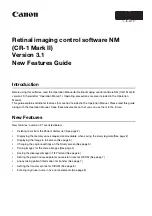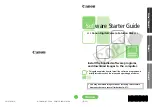
3-23
Cisco H.323 Signaling Interface User Guide
OL-4806-01 Rev. A14
Chapter 3 Provisioning the Cisco HSI
HSI Feature Configuration
•
Configuring G.726 on the Cisco HSI
•
Configuring G.729 Annex and G.729 Annex B
Asymmetric Codec Treatment
The Asymmetric Codec Treatment feature averts the potential for inconsistencies in codec selection,
which can result if the open channel requests are sent by each endpoint at nearly the same time, so that
neither side has received an open channel request prior to sending one. In practice, such asymmetric
conditions occur only for slow start calls. When there is a fast start recipient, both channels agree to use
the same codec in unison.
The Asymmetric Codec Treatment support is enabled if this parameter is present and set to anything
other than “”. For example, support is enabled if the parameter is explicitly set to “Enabled.” To enable
Asymmetric Codec Treatment, enter the following command:
Example:
prov-add:name=sys_config_static, asymmetrichandlingsupported = "Enabled"
Empty Capability Set
The Empty Capability Set feature enables an H.323 endpoint to send a TCS message with empty
capabilities during a call. The TCS message causes the audio channels to close. This action enables the
negotiation and opening of new audio channels.
The Empty Capability Set feature is useful when the H.323 endpoint wishes to change the audio codec
during a call or if the endpoint needs to divert the media streams to a different location. Typically, the
feature is used to place a call on hold to disable the media stream until the user presses the Resume
button.
The Empty Capability Set feature on the HSI requires no provisioning.
H.323 Hairpin
The H.323 Hairpin feature can be used to connect a call between two H.323 endpoints without using
resources on the media gateway. For example, the PGW can respond to the dialled number in an
incoming H.323 call by routing the call to another HSI (perhaps the same HSI) rather than routing the
call to the PSTN. In this case, the originating and terminating HSIs establish the call normally but pass
the H.245 address of the H.323 endpoints. This enables the two endpoints to use H.245 to negotiate
media channels with each other directly, independent of the HSI.
The H.323 Hairpin feature on the HSI requires no provisioning. However, to operate throughout the
system, H.323 Hairpin must be enabled on the PGW. On the PGW, you enable H.323 Hairpin through a
trunk group property by issuing the following commands:
prov-add:trnkgrpprop:name="2000",AllowH323Hairpin="1"
prov-add:trnkgrpprop:name="3000",AllowH323Hairpin="1"
Note
H.323 Hairpin must be enabled for both the ingress and egress EISUP trunk groups.
















































